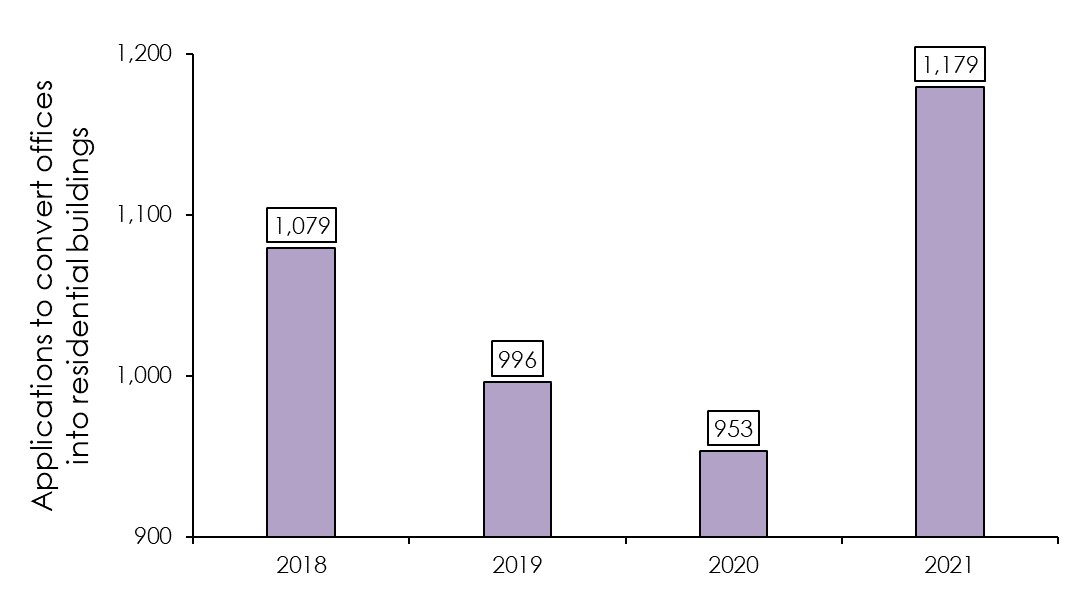Approvals for office to residential conversions jump by a quarter to 1,180 in the past year
Written by
There’s been a sharp increase in the number of offices being converted into residential properties, says Boodle Hatfield, a leading private wealth law firm.
The number of office buildings approved for conversion to residential housing has increased by 24% last year (2021) rising to 1,180 from 950 in the previous year (2020).
While the number of approvals for office to residential conversions has increased, the number of applications for which prior approval was not required (‘permitted dwellings) has fallen. Just 15% of office to residential applications (306) needed no approval last year compared to 18% (322) in 2020, 20% (365) in 2019 and 22% (433) in 2018.
The pandemic has led many businesses to either vacate or downsize their offices as they switch to hybrid-working models. Developers have sought to put this excess space to use and convert the buildings for residential use.
Andrew Wilmot-Smith, Partner in the commercial real estate team at Boodle Hatfield says: “With businesses adopting new models of working, developers are making use of excess office space to deliver much-needed housing.”
Boodle Hatfield says as many office buildings are centrally located with good transport links they are ideal for converting into high-end apartments or housing.
Rather than a costly process of demolition and construction, conversion (or ‘adaptive reuse’) offers a sustainable way of creating homes – utilising the building’s existing infrastructure.
However, Andrew says that office to residential conversions need to be thought through carefully as residential occupiers have very different requirements from office occupiers in areas like heating, natural ventilation, natural light and direct access to outdoor space.
There have been concerns that some office to residential conversions may suffer from poor plumbing, lack of resilience to extreme weather, limited outdoor space and poor insulation.
Andrew, adds “Local authorities and developers need to work together to ensure that vacant office space is put to good use. Any office space converted to residential property needs to be high quality, sustainable and up to appropriate health and safety standards.”
Andrew says repurposing office space for residential use will help tackle chronic housing shortages in the UK. The National Housing Federation estimates around 340,000 new homes will need to be built in England each year to meet demand.
Transforming commercial into residential space has become easier since the introduction of permitted development rights in 2013. These enable certain types of buildings to be converted without the need for planning permission. Historically, there has been strong resistance from some local authorities using Article 4 directions to disapply permitted development rights to preserve employment space, but it appears that post-pandemic, that resistance is weakening.
Sharp rise in number of applications granted to convert offices into residential buildings

This article was first published in CoStar on 16 May 2022. Read the full article here.

